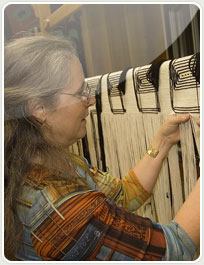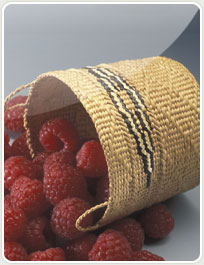Raven’s Tale
An ancient Tlingit textile hand twined without the use of a loom. Originally woven out of mountain goat wool, now modern wools are being hand spun to create new robes and regalia. The twine technique of fabrication predates the more recognized Northwest coast weaving called “Chilkat”. In Chilkat the weaver uses wool to create circles and formline figures, eyes, faces and body parts for example. The Raven’s tail on the other hand is strictly geometric. Images are abstract, and like the patterns on spruce root basketry knowledge of meaning can be more difficult to interpret.
Less than a dozen fragments and robes exist from ancient village sites. The bulk of the woven artifacts are in Europe, coming from a single expedition in 1788 with the Tlingit of Lituya Bay, Alaska.
Raven’s Tail weaving or Regalia examples are:
o Ceremonial or Dancing Robes
o Waist Robes or Dance Aprons
o Koogainaa or Sash worn over one shoulder
o Leggings
o Dance Bags
o Medicine Bags
o Wall Hangings



